Part of a series of articles titled Volcanic Features.
Previous: Volcanic Craters
Next: Crater Lakes
Article
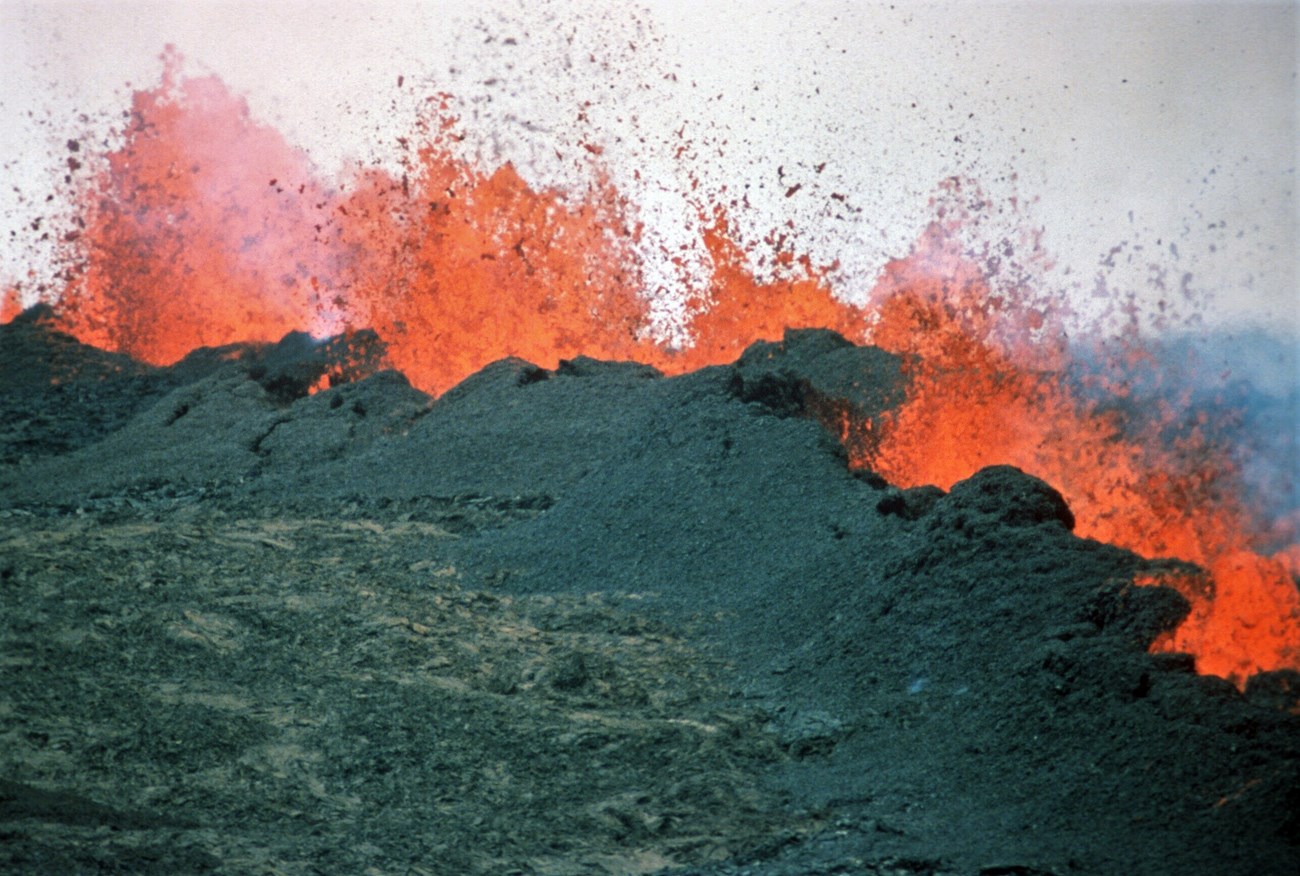
NPS photo.
A volcanic vent is the place at the Earth’s surface where lava flows, tephra (pyroclastic materials consisting of volcanic ash, lapilli, or bombs), and fragmented rocks are erupted. Volcanic gases are also emitted at vents.
Volcanic vents may be located:
In summit craters,
On a volcano’s flanks,
At the base of a cinder cone,
Around the margins of a caldera.
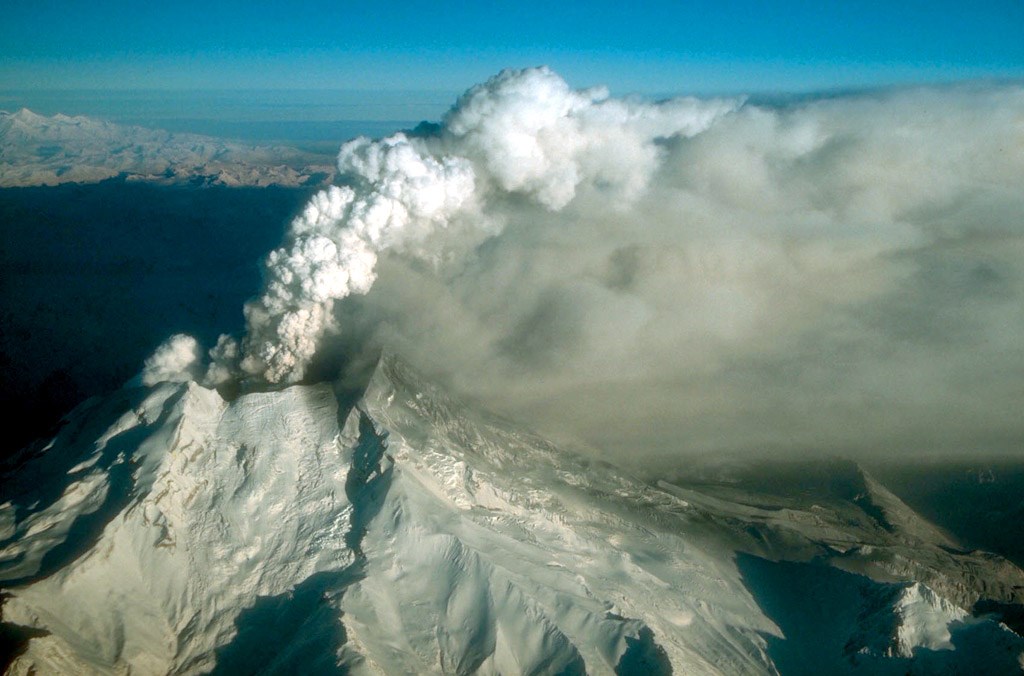
USGS photo by W. White.
Low-level steam and ash eruption from the vent in Redoubt Volcano’s summit crater. Photo taken December 18, 1989.
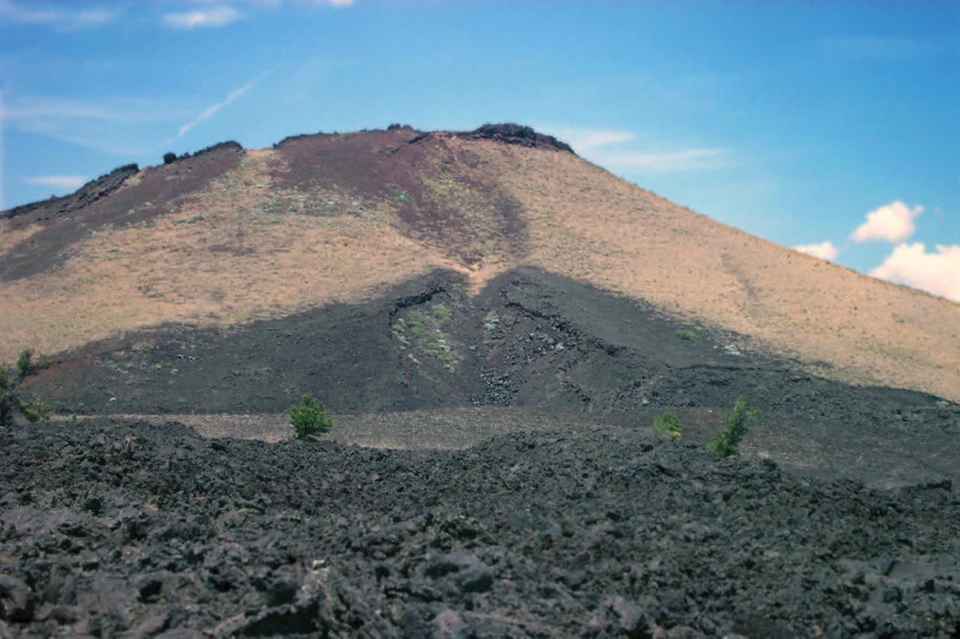
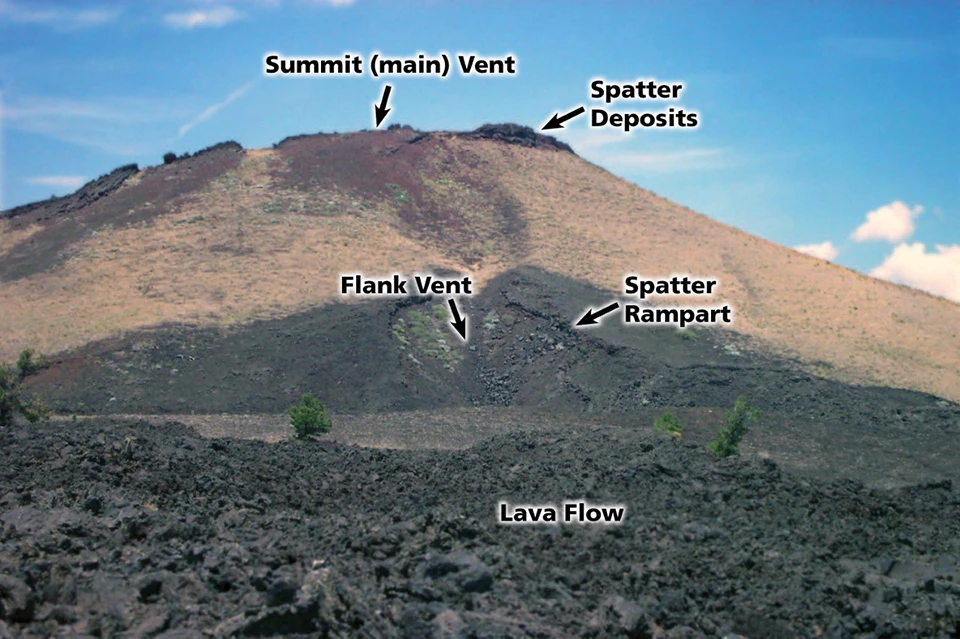
Left image
Watchman cinder cone in Craters of the Moon National Monument & Preserve, Idaho.
Credit: NPS photo from Niles et al. (2011).
Right image
Watchman cinder cone photo with feature labels.
Credit: NPS photo from Niles et al. (2011).
The vent shown above is on the south flank of the Watchman cinder cone in Craters of the Moon National Monument. The lava flowed in a small channel with small spatter ramparts on either side.
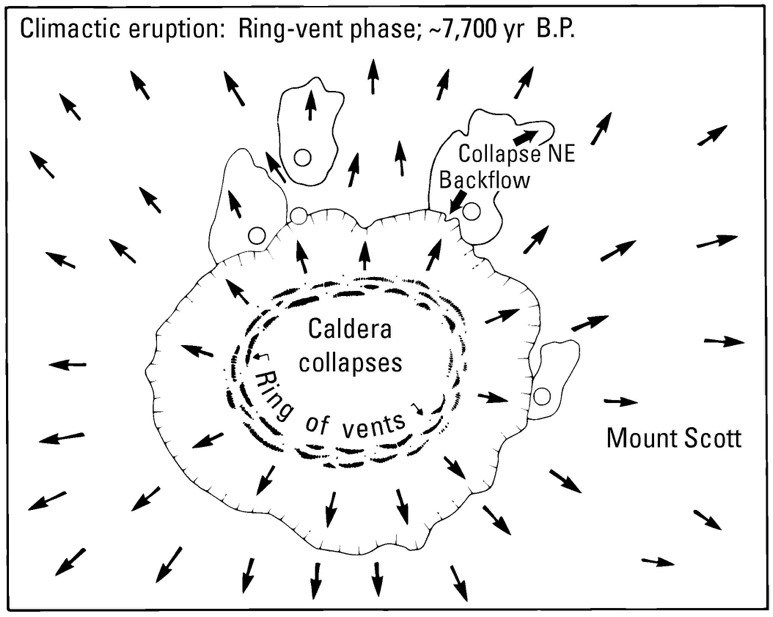
Adapted from from
Bacon, C.R., and Wright, H.M., 2017, Geologic field trip guide to Mount Mazama and Crater Lake Caldera, Oregon: U.S. Geological Survey Scientific Investigations Report 2017–5022–J1 (47 p).
The climatic eruption of Mount Mazama that formed the Crater Lake caldera took place from ring-vents. Arrows show direction of movement of pyroclastic flows. These vents are underneath the lake because landslides that occurred soon after the eruption widened the caldera.
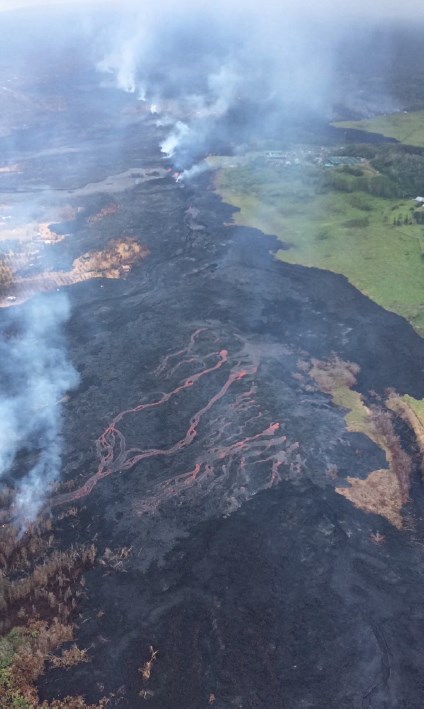
Many vents are roughly circular, but other vents may be elongate or linear.
Image (right): Linear fissure vent that was active during the May 2018 eruption of Kīlauea in Hawai‘i Volcanoes National Park, Hawai‘i. This vent is not located within the park's boundary.
Photographer: USGS Hawaiian Volcano Observatory, public domain.
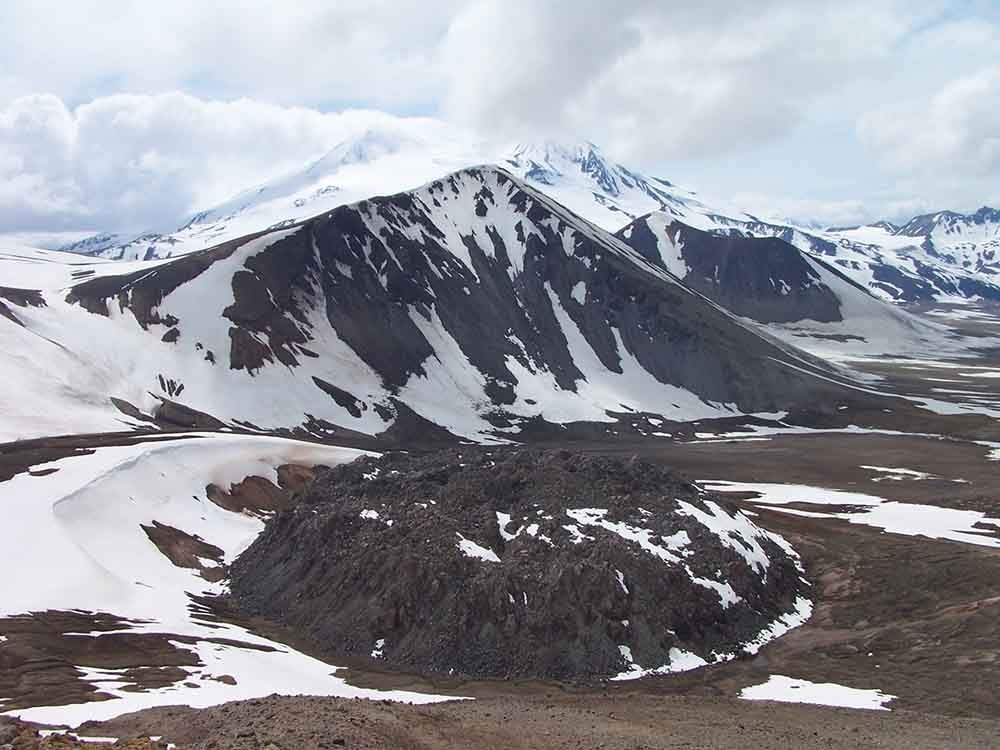
USGS photo by Pavel Izbekov.
Vents are typically filled with a plug of solidified magma at the end of an eruption. The Novarupta Dome formed at the end of the 1912 eruption in Katmai National Park that created the Valley of Ten Thousand Smokes.
Crater Lake National Park (CRLA), Oregon—[CRLA Geodiversity Atlas] [CRLA Park Home] [CRLA npshistory.com]
Craters Of The Moon National Monument & Preserve (CRMO), Idaho—[CRMO Geodiversity Atlas] [CRMO Park Home] [CRMO npshistory.com]
Hawaiʻi Volcanoes National Park (HAVO), Hawai'i—[HAVO Geodiversity Atlas] [HAVO Park Home] [HAVO npshistory.com]
Katmai National Park & Preserve (KATM), Alaska—[KATM Geodiversity Atlas] [KATM Park Home] [KATM npshistory.com]
Lake Clark National Park & Preserve (LACL), Alaska—[LACL Geodiversity Atlas] [LACL Park Home] [LACL npshistory.com]
Part of a series of articles titled Volcanic Features.
Previous: Volcanic Craters
Next: Crater Lakes
Last updated: April 18, 2023